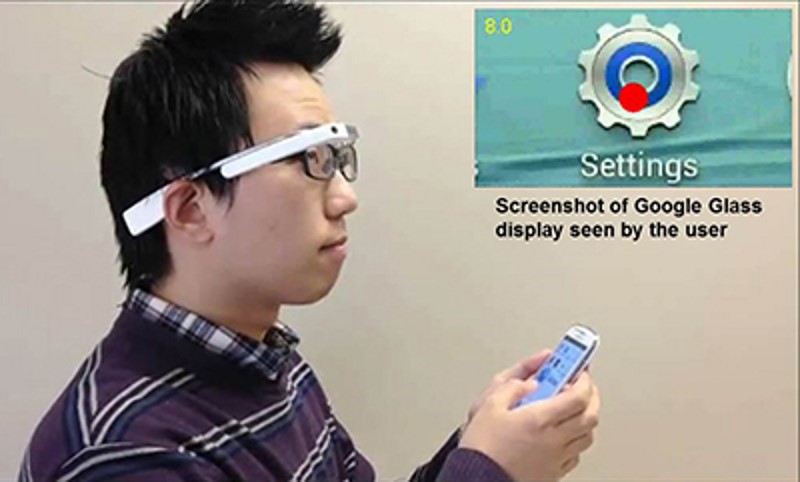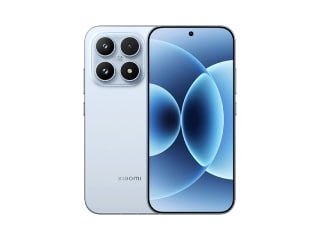App Takes New Approach to Smartphone Screen Magnification for Low-Vision Users

The team from Schepens Eye Research Institute of Massachusetts Eye and Ear/Harvard Medical School designed the app that improves upon the built-in zoom feature of smartphones by projecting the display to Google Glass, which users can navigate using head movements to view a corresponding portion of the magnified screen.
"Given the current heightened interest in smart glasses such as Microsoft's HoloLens and Epson's Moverio, it is conceivable to think of a smart glass working independently without requiring a paired mobile device in near future," said first study author Shrinivas Pundlik.
"The concept of head-controlled screen navigation can be useful in such glasses even for people who are not visually impaired," Pundlik wrote in the study published in the journal IEEE Transactions on Neural Systems and Rehabilitation Engineering.
The Pundlik-led team developed the head-motion application to address the limitations of conventional smartphone screen zooming, which does not provide sufficient context and can be painstaking to navigate.
"When people with low visual acuity zoom in on their smartphones, they see only a small portion of the screen, and it's difficult for them to navigate around - they do not know whether the current position is in the centre of the screen or in the corner of the screen," noted senior author Gang Luo.
"This application transfers the image of smartphone screens to Google Glass and allows users to control the portion of the screen they see by moving their heads to scan, which gives them a very good sense of orientation," Luo added.
In an evaluation of their new technology, the researchers observed two groups of research subjects (one group that used the head-motion Google Glass application and the other using the built-in zoom feature on a smart phone) and measured the time it took for them to complete certain tasks.
The researchers showed that the head-based navigation method reduced the average trial time compared to conventional manual scrolling by about 28 percent.
Get your daily dose of tech news, reviews, and insights, in under 80 characters on Gadgets 360 Turbo. Connect with fellow tech lovers on our Forum. Follow us on X, Facebook, WhatsApp, Threads and Google News for instant updates. Catch all the action on our YouTube channel.
Related Stories
- Samsung Galaxy Unpacked 2025
- ChatGPT
- Redmi Note 14 Pro+
- iPhone 16
- Apple Vision Pro
- Oneplus 12
- OnePlus Nord CE 3 Lite 5G
- iPhone 13
- Xiaomi 14 Pro
- Oppo Find N3
- Tecno Spark Go (2023)
- Realme V30
- Best Phones Under 25000
- Samsung Galaxy S24 Series
- Cryptocurrency
- iQoo 12
- Samsung Galaxy S24 Ultra
- Giottus
- Samsung Galaxy Z Flip 5
- Apple 'Scary Fast'
- Housefull 5
- GoPro Hero 12 Black Review
- Invincible Season 2
- JioGlass
- HD Ready TV
- Laptop Under 50000
- Smartwatch Under 10000
- Latest Mobile Phones
- Compare Phones
- Realme P4x 5G
- OnePlus Ace 6T
- Nubia Flip 3
- Nubia Fold
- OPPO A6x 5G
- Samsung Galaxy Z TriFold
- Poco F8 Ultra
- Poco F8 Pro
- Asus ProArt P16
- MacBook Pro 14-inch (M5, 2025)
- Poco Pad M1
- Poco Pad X1
- Just Corseca Skywatch Pro
- Honor Watch X5
- Acerpure Nitro Z Series 100-inch QLED TV
- Samsung 43 Inch LED Ultra HD (4K) Smart TV (UA43UE81AFULXL)
- Asus ROG Ally
- Nintendo Switch Lite
- Haier 1.6 Ton 5 Star Inverter Split AC (HSU19G-MZAID5BN-INV)
- Haier 1.6 Ton 5 Star Inverter Split AC (HSU19G-MZAIM5BN-INV)

















